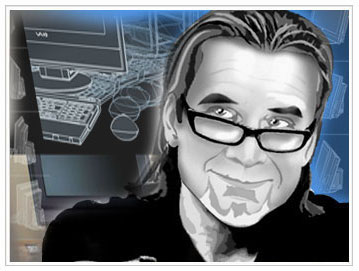Bret Stout is Enhancing Fort Worth – One Business at a Time.

Home I Experience I Portfolio I Capabilities I Clients I Contact
Badass Logo Designs I Website Design Fort Worth I Brand Strategy Fort Worth I Mobile Website Design Fort Worth
Logo Design Fort Worth I Vector Logos Fort Worth I Google Search Fort Worth I Search Engine Optimization Fort Worth
The Amazing Untold History of Fort Worth I Find Out More About Bret Stout
Check Out All of Bret Stout's Fort Worth Photo-Composites I Fort Worth Links I Sitemap
DESTINATION: FORT WORTH
Yes, there is so much to love about Fort Worth.
(But it would be awhile until Bret Stout figured that out.)

To understand the high value Bret can bring to your brand, he believes it takes more than just his extensive ad agency experience working with the largest brands in the world. He has proven that within his portfolio of work, his large client list (big brands to small), and his industry awards and accolades. It's equally as important to understand his life and how he got here.

Born in Los Angeles, raised in Orange County - and abruptly followed by a family move back to their birthplace and home to a major Stockyards town of St. Joseph, Missouri, his American Indian grandfather (who dressed as a cowboy with turquoise bolos and silver and turquoise rings), his strict German grandfather, and the deep connection between St. Joseph and Fort Worth - and then followed by his agency experience and military experience, you will discover just how hyper-relevant Bret Stout is to the legacy of Fort Worth.

Bret Stout's life has been more diverse than most - and he sincerely believes this diversity of contradictive life experiences allow him to more easily understand and comprehend varying business verticals AND embrace the perspectives of a wide range of target audiences - and how to leverage that for his clients. Natural genetic skills include problem solving, new product ideation, storytelling, and hand illustration. Execution of these skills have been fully developed within ad agencies with award-winning work for the biggest brands in the world.
Yes, you will discover just how much Bret Stout is connected to the legacy of Fort Worth on so many levels. How? We'll just have to start at the beginning...
STORYTIME
You see, Bret Stout was born in Los Angeles and grew up in Orange County until the age of 12. It wasn't the fact he visited the magical "Knott's Berry Farm and Ghost Town" in Buena Park, California - his first school was Walter Knott Elementary located on the same property. He and his friends were there almost every single day - and there were no fences back then because it was a ticket system to ride the rides. But small boys didn't have to have tickets to be entrenched in the wild, wild west.
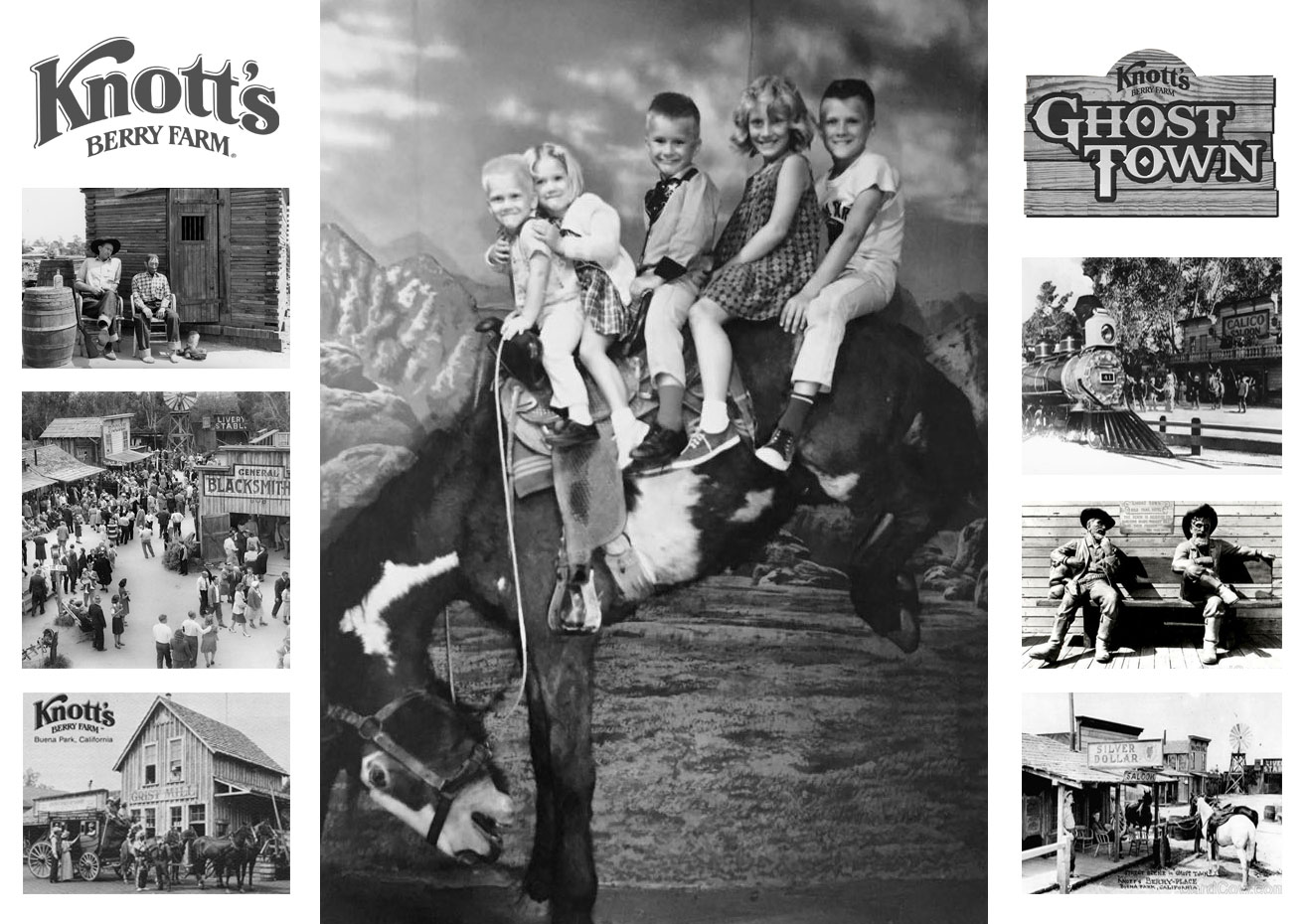
(That's Bret above in the middle with his cowboy shirt and bandana)
Knott's main theme was the old west - cowboys, marshals, stagecoaches, and outlaws. This is how Bret assumed all of Texas to be. Bret and his friends would run over to Knott's after school and hide in the bushes waiting for the stagecoaches to come by being chased by bandits. The outlaws on their horses would ALWAYS see Bret and his friends and would stop and shoot them with blanks from their revolvers. The outlaws always knew they'd be there.

Yes, Bret's 'perception' of Texas was a lot like Knott's Berry Farm's overall theme - cowboys, marshals, stagecoaches, and outlaws, and the wild, wild west. And he was living it nearly every single day.

Bret was the middle child of a family of five - and soon even less significant with the birth of his baby brother (making it six kids) because now he had to 'share' that middle position. But that was okay with Bret - he was always one to be independent and search out his own adventures. And he did - Knott's Berry Farm, Jungle Island, Aligator Farm - all within the same block where he lived. And he brought things home - from ostriches, baby ducks, kittens, and lots of lizards.
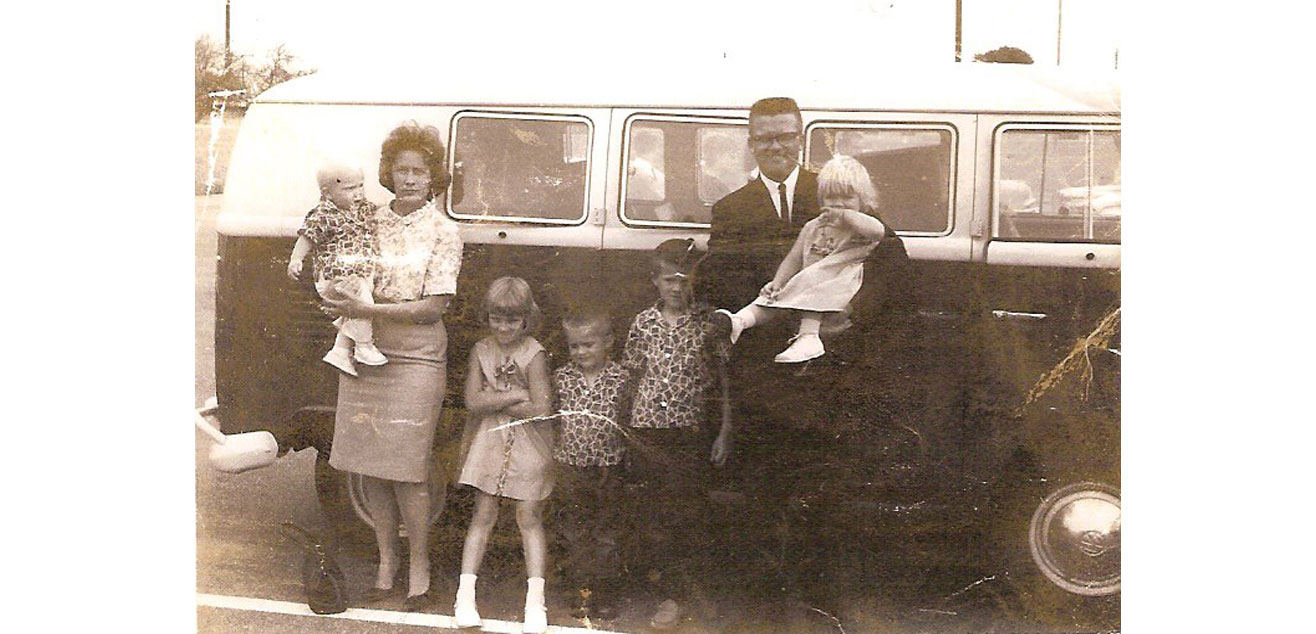
His family made the most of the weekends going to church, the beach, the mountains, hollywood, and Disneyland. His dad was a Minister who worked out at the gym owned by Bill Pearl - and was friends with bodybuilders Bill Pearl and Arnold Schwarzenegger. It was a world where ANYTHING was possible and you could become ANYTHING you wanted to be. It was a magical world without any limits.
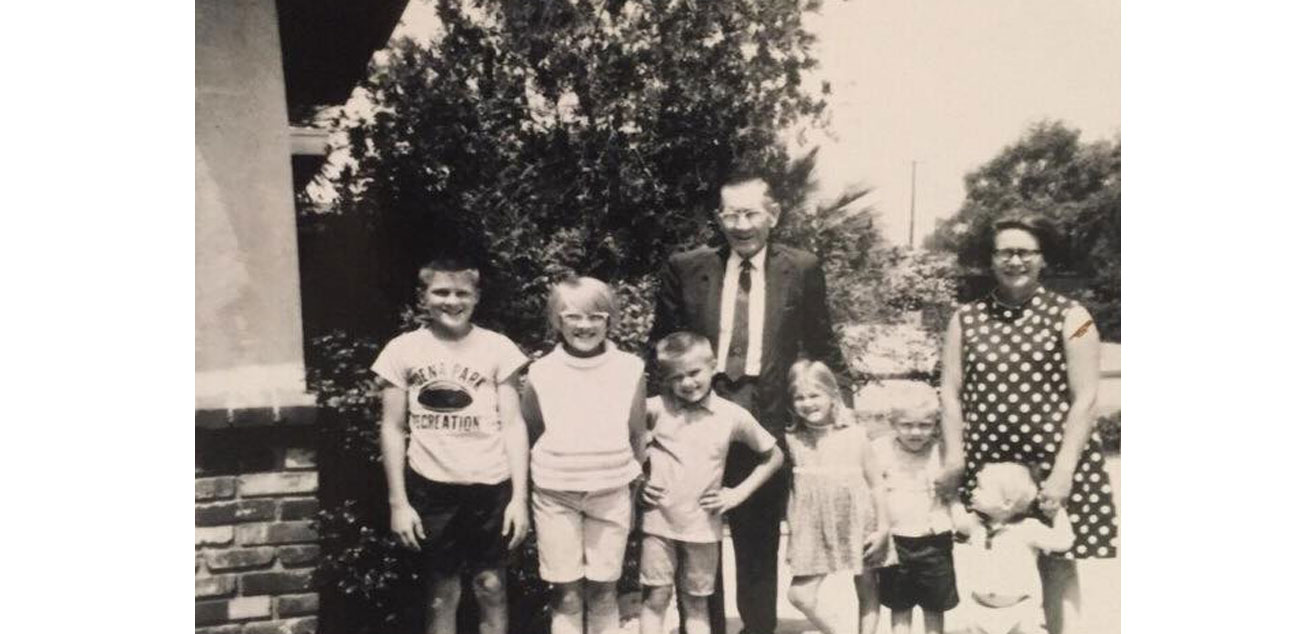
In middle school his family moved from southern California to St. Joseph, Missouri – birthplace of both of his parents, and home to Jesse James and the Pony Express.
St. Joseph was also home to one the country's first of four (4) major stockyards and livestock exchanges (Fort Worth, Chicago, St. Joseph, and Oklahoma). Note: It would be 1866 when Thorton Chisholm and Crockett Cardwell led the very first cattle drive from DeWitt County Texas (south of San Antonio) and through Fort Worth, on their way to their destination - St. Joseph, Missouri. Jesse Chisholm, an American Indian, actually marked the trail north of the Red River into Oklahoma, Kansas, and St. Joseph, Missouri.
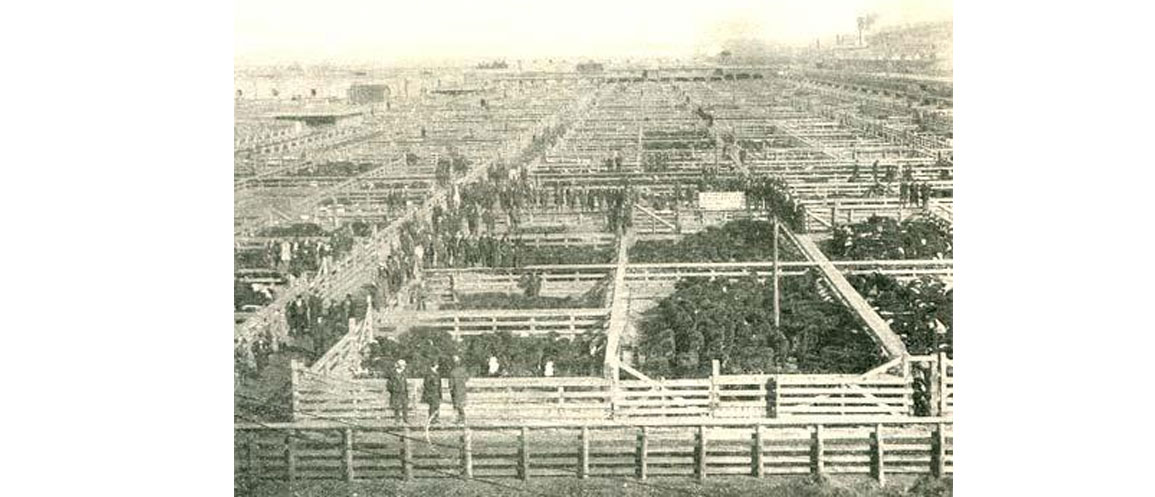
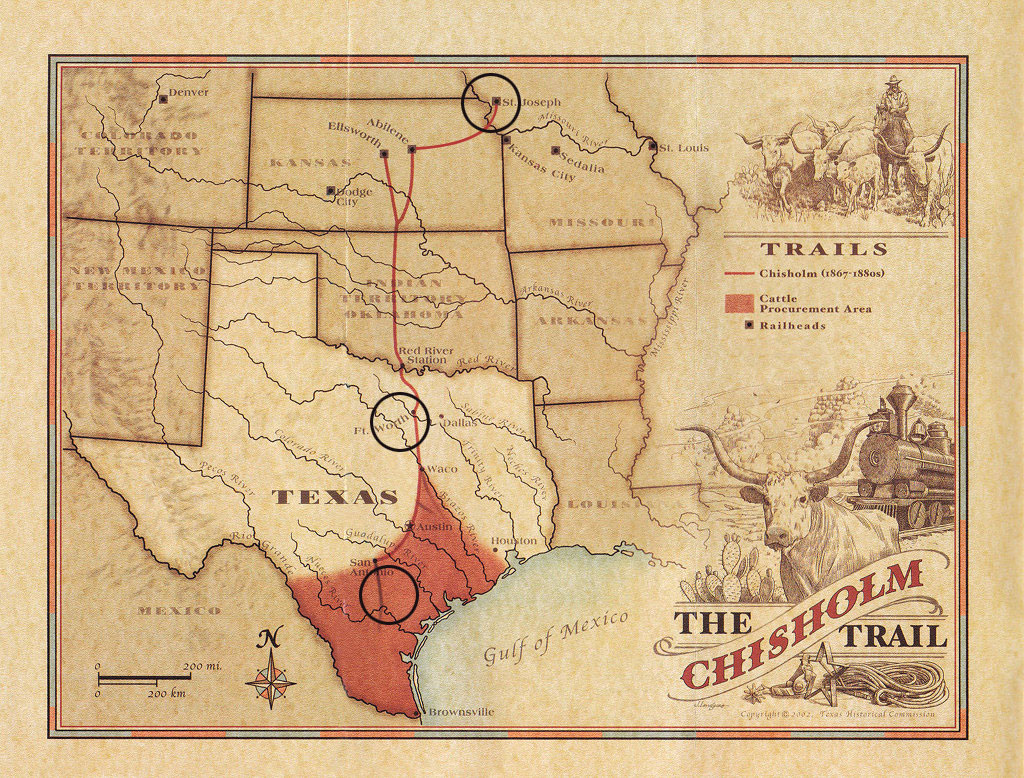
Situated directly on the Missouri River, St. Joseph was established in 1826 by Joseph Robidoux who set up the very first general store in this area called the Blacksnake Hills Trading Post.

St. Joseph then grew during the California Gold Rush of 1849 as the last supply and transit hub for opportunists heading west to California. Steamboats brought people up the Missouri River to St. Joseph where they organized wagon trains and purchased provisions for the rest of the journey west. In the early 1830s, the United States didn't even go further west than Missouri and St. Joseph was the eastern most city - and that is why St. Joseph was known for the moniker "Where the Wild West Began" and later, "Where the Wild West and Pony Express Began and the Life of Jesse James Ended."
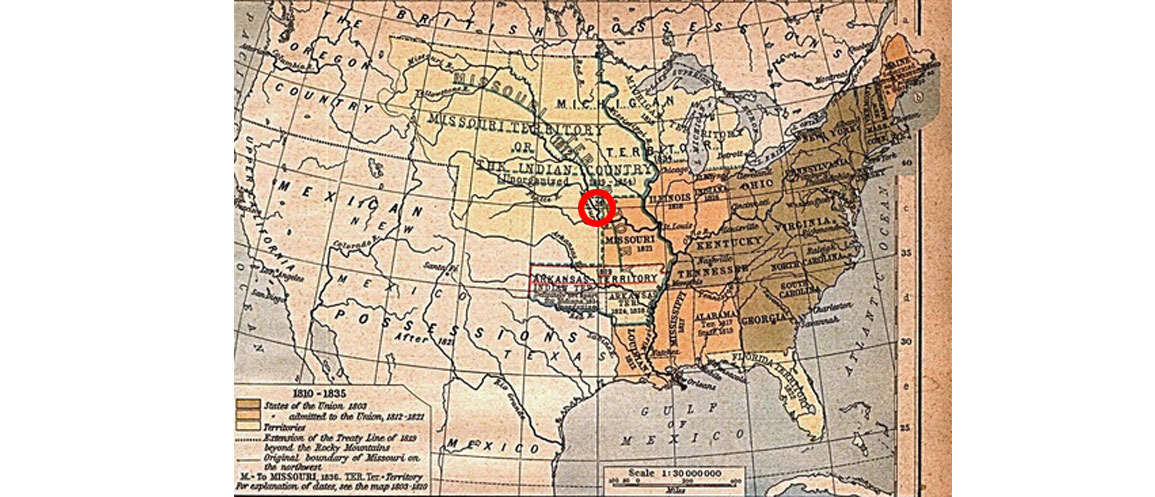
Interestingly, it was after Texas was established and Fort Worth became a city when Fort Worth took on the moniker of "Where the West Begins". You may have never noticed, but Fort Worth patrol cars have "WHERE the WEST BEGINS" right there on the driver and passenger doors.

As the western most city/state of the United States, St. Joseph, Missouri was a major destination and thoroughfare. In fact, St. Joseph (established in 1843) was substantially larger and more populated than the city 55 miles to the south (the small town of Kansas City, Missouri established in 1853). History has it that after the Civil War, there was to be a major Hannibal & St. Joseph Railroad bridge constructed over the Missouri River connecting Leavenworth, Kansas and St. Joseph, Missouri, but the St. Joseph City Council could not make a decision on exactly where it should cross, so the Hannibal & St. Joseph Railroad chose a different location for the bridge - over the Missouri River at Kansas City. On the left below is the Hannibal Bridge, and the right is the second level deck on the same bridge called the "Second Hannibal Bridge" later built for automobiles.

The new bridge opened in 1869 and named the "Hannibal Bridge". That is when Kansas City exploded in development and population to become one of the largest cities in the midwest. And St. Joseph began its decline. It wouldn't be until 1873 when the St. Joseph & Denver Railroad built a bridge over the Missouri River to St. Joseph. By 1879 the bridge transferred to the St. Joseph & Grand Island Railroad, with the bridge named the "Grand Island Bridge", which was primarily used by Union Pacific.

It was almost identical to the Kansas City bridge. The Atchison, Topeka and Santa Fe Railway and Chicago, Rock Island and Pacific Railroad also had trackage rights to the bridge. The bridge was replaced by the Union Pacific Railroad in 1906 and called the "St. Joseph Swing Bridge". It was called a "swing bridge" because the center could separate and pivot to allow steamboats and other large ships to pass through (see photo above).

The western terminus of the Hannibal and St. Joseph Railroad (the railroad came from the east and ended at St. Joseph) was completed in 1859 (and then re-routed through Kansas City to the south). Steam boats and barges could still move people, horses and stagecoaches over the Missouri River - and St. Joseph became the eastern terminus of the Pony Express (from the new west coast in California and Oregon all the way east to St. Joseph).
The Pony Express (the first mail service by horseback) was originally launched from St. Joseph on 3 April 1860. During the American Civil War, St. Joseph became a point for guerrilla operations and was frequented by border outlaws such as W.C. Quantrill, Jesse James (who would later be killed in his St. Joseph home in 1882 by Robert Ford), Robert Ford (member of the James-Younger Gang), Belle Starr (aka Hell's Belle), John and Cole Younger.
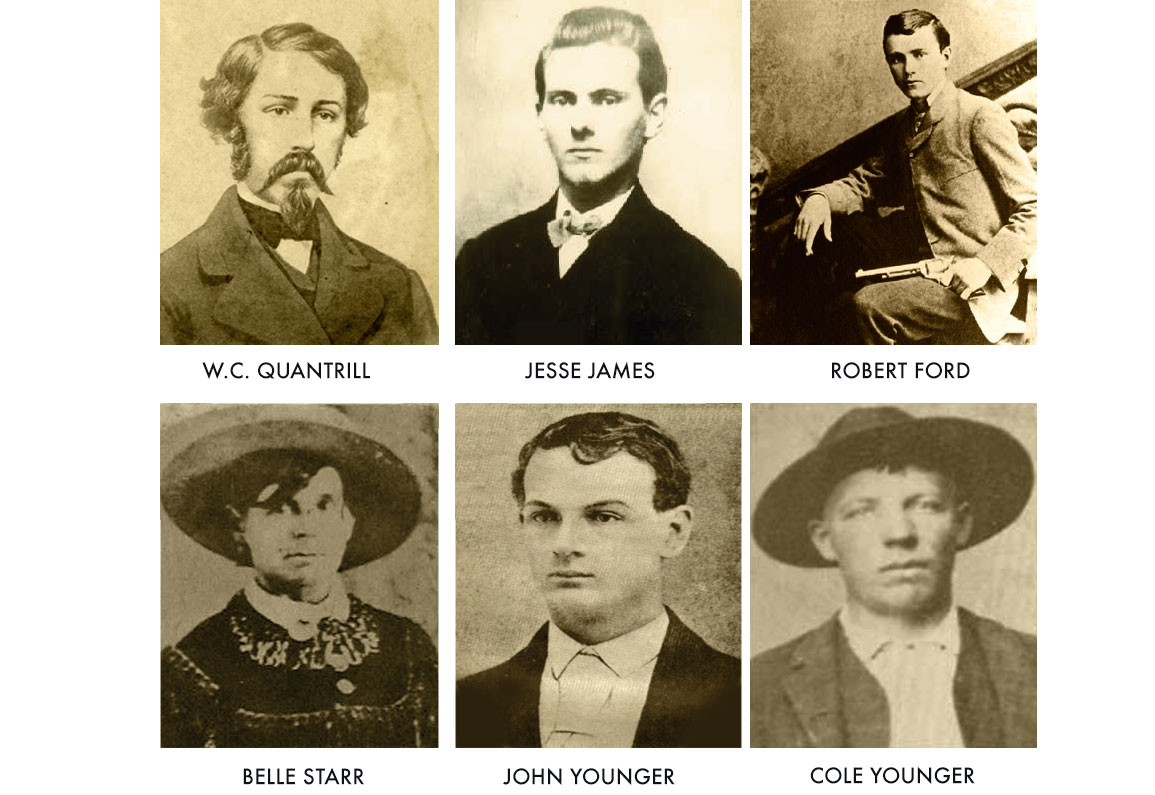
Young Bret was excited to be in St. Joseph because this was the real wild west with outlaws and history that was depicted at Knott's Berry Farm and T.V shows.
Bret explored the foot hills, the Stockyards, the railroad tracks, the railroad bridges, the old buildings in southend and downtown St. Joseph - he even discovered and explored the abandon underground tunnel system through a hidden door in the basement of a family friend's business, Caster's Beauty Salon and Academy. Bret would visit the museums and try to learn as much as he could about the history of the city where his parents were born. They were born here, grew up here, and moved to southern California on their honeymoon. Even his grandfathers would spend time with Bret explaining the history as they knew it - two varying perspectives from a rich man and a poor man. And there was some amazing stories to be heard.
Bret also learned that this area was originally American Indians (told by his American Indian grandfather), a destination of early German immigrants (as told by his German grandfather), and also a military stronghold with Fort Smith, built high atop the bluffs overlooking the Missouri River. The military fort was built on Prospect Hill in 1861 (just north of where downtown St. Joseph is today) and named after Colonel Robert F. Smith who had a total of 2,500 troops and 12 cannons at the ready.


Both of Bret's grandfathers lived in St. Joseph and made their living with cattle and the Stockyards. His mother's father was an American Indian who bought and sold cattle and his father's father was native German who worked at the Armour Meat Packing Plant - and with the move to Missouri, Bret finally had the opportunity to spend time with both of them and hear their amazing stockyard stories. They would take Bret down to the old Stockyards and share story after story of what it use to be like in its heyday. Interestingly, Fort Worth has a long history with their own Stockyards (the most famous) and Armour Meat Packing Plant. As it turns out. St. Joseph and Fort Worth were two of the four major Stockyards in the US (+ Chicago and Oklahoma).
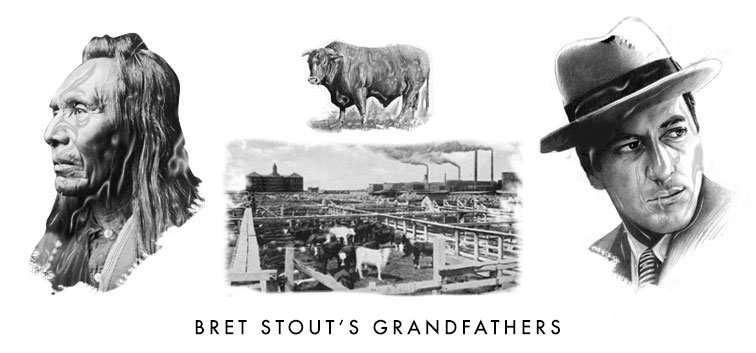
Ironically, Bret would draw all the time - and had always dreamed of one day being a syndicated cartoonist or an animator like Walt Disney – and soon he discovered that Walt Disney's childhood home was just 100 miles directly to the east in Marceline, Missouri. Disney would later say, "It was here that I began to draw animals and indulge my imagination. My exposure to rural life influenced me throughout my career." This was very inspiring to Bret - as he felt he was following in similar paths as Disney, although in a different sequence. Disney's family moved to Kansas City in 1911 (just 55 miles south of St. Joseph) and where he would later open his first animation studio in 1922 (Laugh-o-Grams). By 1923 Disney was off to California, and the rest is history.

DISCOVERING DIFFERENT PERSPECTIVES
While the move was an unexpected culture shock, it created a valuable balance in how Bret sees the world and the varying perspective of others.
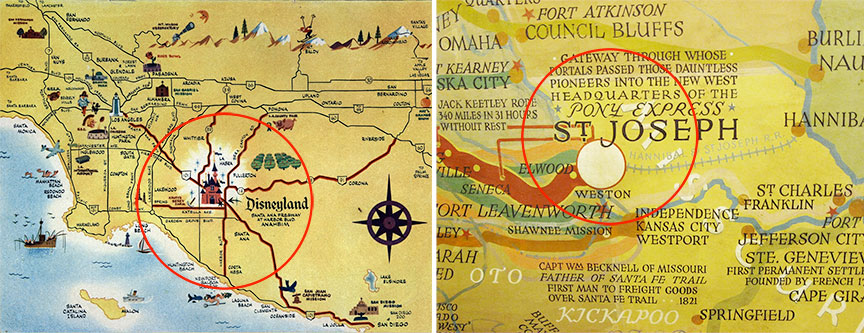
In California he was surrounded by sunshine, beaches, entertainment, and the magic of Disney and Knott's Berry Farm. He spent most of his time at Knott's old west, Knott's Jungle Island, and Alligator Farm. At five years old he brought an ostrich home and begged his mom to let him keep him. His dad's office was on Sunset Boulevard in Hollywood, shared by movie stars and agents, and he would often visit Paramount Studios, Cinerama, La Brea Tar Pits, and Olvera Street in Los Angeles. His family spent summers on Balboa Island and he once caught a baby shark there - and begged to bring him home.
By 6th grade he was riding the Pink Bus with his friends all the way down Beach Boulevard to Huntington Beach and back (without the knowledge of their parents).

Then BOOM! Life was about to change.
His family moved to St. Joseph, Missouri after 6th grade. For the very first time he would experience all four seasons and he learned to shovel snow and walk in it to school. Bret was in 7th grade in Southend St. Joseph - right next to famous, yet nearly abandoned, Stockyards. He would visit the Stockyards often with his new friends - all the way to the roaring Missouri River. There were poisonous snakes and massive bullfrogs. When the river would flood his dad would take him down to catch oversized catfish and carp - but not with a pole - with a net.
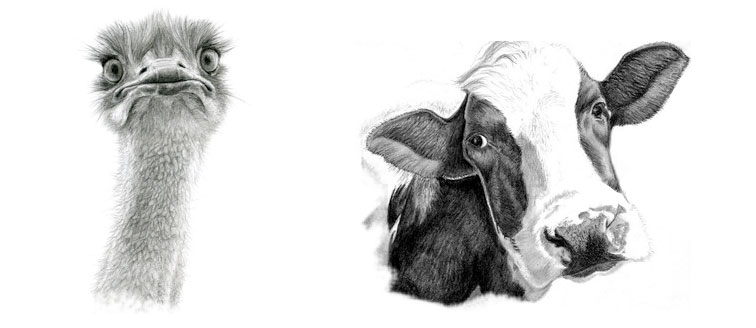
In 8th grade his family moved out to the country to Cosby, Missouri and lived in a house surrounded by 46 acres of forest, backed by corn fields, and then the Platte River. It was there where he learned to hunt, on his own, by himself. His first outing with a 410 shotgun, he shot three quail and one large pheasant. He learned to gig and skin bullfrogs, and cook and eat frog legs. Every year he would scout out his secret locations for morel mushroom hunting, and cook and eat them.
His entire 8th grade class had only eight students - and one day he brought a baby raccoon home and had him for a few years. In 9th grade he went to a small farm community high school in Savannah, Missouri. Bret has worked on a dairy farm, shoveled manure, cleared out barns, detasseled corn, birthed a calf, branded cattle, erected grain silos, and put up thousands of yards of cattle fence. All of this was hard work but he loved it. It created rich experiences and built character. Hey, maybe the stockyards and livestock (from both his grandfathers) was in his DNA...

LIVESTOCK + ILLUSTRATION
The juxtapositions of Bret Stout would continue...
Yes, Bret spent most of his teen years working with livestock - but he never stopped illustrating and writing. Bret was inspired by the fact Walt Disney grew up in rural Missouri and worked on a farm. From a very young age, Bret continued to illustrate and write because he always wanted to be a syndicated cartoonist or animator. By age 18 he had created two one block gag series and submitted regularly to the major syndications, but with no success.
Finally his work on a new one-block gag series was accepted by King Features Syndicate out of New York City in a test series called "The New Breed" and would appear in many major newspapers across the U.S. Unfortunately, King Features decided they wanted to contract only strip series - not a one-block gag series due to their current available page space.
Bret never gave up - and his persistence paid off. Bret snagged a job with an ad agency as a contract storyboard illustrator for television campaigns. Later he would be awarded a copywriter position for television and print. From there he moved from senior copywriter to a senior art director, still working in television and print, a rare move within the ad agency world.
Wow. he always wanted to make a living illustrating and writing - and now he was doing just that.
A MOVE TO TEXAS
Bret's parents had previously moved to Texas. and Bret would visit them often. He was definitely surprised that his California perspective of Texas was highly inaccurate. It was much more than just cowboys and Bret ended up moving to Dallas and lived there for more than 20 years.

Although a decade behind California, and a century ahead of St. Joseph, Missouri, Dallas was a progressive, metropolitan city. Bret lived in warehouse lofts in Deep Ellum and Fair Park for 12 of those years.

And every time he went to Fort Worth, he went to the Stockyards. So naturally his perception of Fort Worth was limited to 'Cowtown' and the 'Stockyards' - but he thoroughly enjoyed it because it reminded him of the history of St. Joseph, Missouri and his grandfathers.
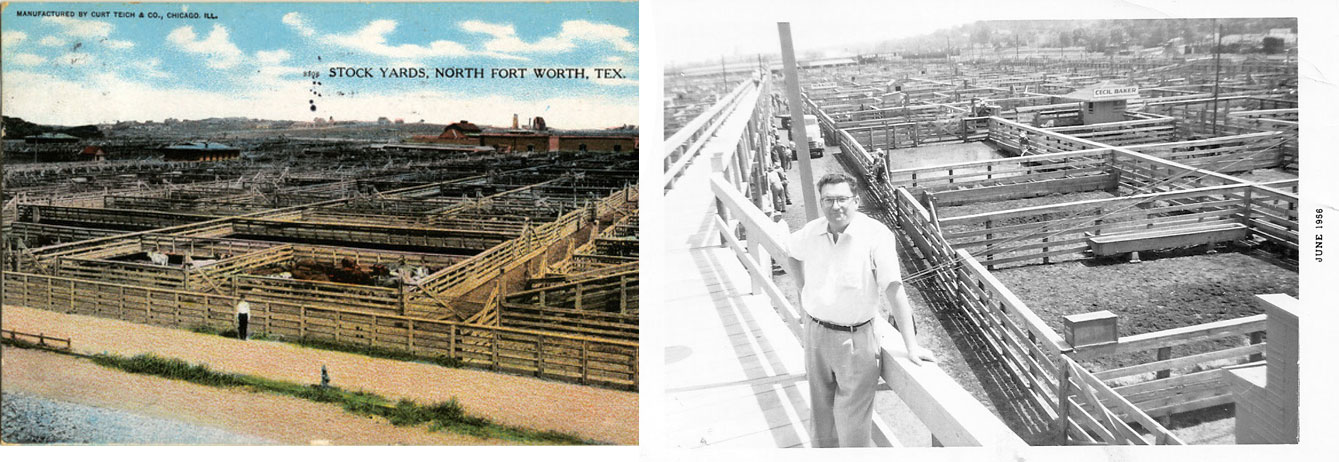
In the two images above, you see the old Fort Worth Stockyards with the Armour Meat Packing Plant in the background, and on the right you see the St. Joseph Stockards (also with an Armour Meat Packing Plant). If you look closely at the photo on the right from 1956 (you can right-click to view larger image), you'll see a sign that says "Cecil Baker" - this was Bret Stout's great uncle - his grandfather's brother (also an American Indian) who was also in the cattle business in the St. Joseph Stockyards.
UNITED STATES MARINE CORPS
And here comes a new and major juxtaposition...


Early in his career as a copywriter, Bret was assigned a military campaign – but the military client would not provide the agency target audience data. Joining the Marine Corps would fix that. There were other reasons he joined - his father was a Marine form 1946 to 1952, and Bret always wanted to know what it would be like to go through the rigorous training and the pride of being a Marine. So he decided to join the Marine Corps Reserve to get the target experience himself - and then activated to war four years later. He is combat-decorated (8 ribbons, 5 medals) and ended up serving eight years in the Marines.

HISTORICAL TREASURE HUNT
In Dallas, Bret Stout spent most of his free time in a Deep Ellum warehouse built in 1896 and former home of Honest Joe's Pawn Shop from 1936 to 1972. When Honest Joe (Rubin Goldstein) died in 1972, his pawn shop was padlocked and windows boarded - until Bret Stout came along and met Honest Joe's grandson through some of his friends from SMU. With pride he told the story of his wondrous grandfather who was known as "Honest Joe" and explained that no contractor in the city of Dallas would touch it, and the family feared the whole thing would be torn down.
Bret just had to go see this place.

You see, everything was in the building as it was in 1972 when Honest Joe died - plus the time and rain from the deteriorating roof of the two story building.
IT WAS TRULY A "DIG" SITE
Imagine a building filled with wooden shelving 20 feet high and only two feet apart, fill the shelves with everything imaginable, and then shake the building so everything falls over on top of each other. THEN let the roof leak and let rain pour in for nearly 20 years, and then throw two feet of dirt on top. That is what it was like. There was a reason no contractor in the City of Dallas would touch it. But Bret did. One shovel scoop at a time. The building would have to be emptied before the power could be turned on - so Bret approached the neighboring Prenglers (father and son, 90's and 70's) who sold irregular clothing out of their warehouse next door - and they agreed to run an extension cord out of their mailslot so Bret could plug in a clamp light and radio and start the "dig".
ODD FAMILY BEHAVIOR
Although Bret encouraged the Goldstein family to come visit and watch the progress, Honest Joe's son Eddie Goldstein was the only one to come visit. Eddie was also known as "King Edward" and had his own pawnshop on East Grand Avenue in Dallas. Eddie is also in the photo above, on the right, holding the chrome-plated machine gun behind his father Honest Joe. Bret always felt it was odd that Eddie would NEVER come inside - and would only chat on the sidewalk. It was confusing. Bret wouldn't find out until years later that the family did not want to visit or go inside because Honest Joe had died INSIDE his pawn shop.

During the "dig" Bret continued doing contract work with advertisinbg agencies as a storyboard illustrator, and later as a writer, as well as painting classic reproductions of famous artists work to pay living expenses.
Bret Stout took on this ambitious task and got to work digging through the building, shovel scoop by shovel scoop. It was a major undertaking of debris removal and building repair that took three and a half years - but the most exciting part was the massive treasure hunt. It was like mining for gold. Old revolvers, machine guns, old tools, old postage stamps, and old coins. Oh, and lots of junk. He became friends with Alex Troup, President of the Dallas Historical Society who frequently visited and explained the significance of a lot of the discoveries, many of which Bret donated to the Historical Society.
GUN DEALERS + NAZIS + PROHIBITION + GANGSTERS
Among these items were never-before-seen photos of Jack Ruby with his dancers from the Carousel Club, a former 'best friend' of Honest Joe's. Interestingly, Jack Ruby was born Jacob Rubenstein, and Honest Joe was born Rubin Goldstein. They had been friends a very long time. Rubin Goldstein's nickname was Ruby - but changed it to "Honest Joe". How good of friends were they? After Jack Ruby died in jail, Honest Joe found himself the appraiser of Jack Ruby’s estate.
Bret Stout and Alex Troup found substantial evidence of upstairs activity between 1913 to 1918 as a German Hideout during WWI. There were highly damaged newspapers from every major newspaper from around the country, and some old German coins.
They also found evidence of upstairs activity of a speakeasy used during Prohibition between 1920 and 1933 with trap doors and period broken alcohol bottles.

There was also evidence of an assasination area where men were shot and killed (see photo above). The bullet holes in the wall were not at eye level (which would be inside target practice, as Alex explained) - but if you sat down on the floor, the bullets made the shape of an upper body. Alex Troup took a knife and dug out bullet slugs out of the plaster and brick wall. Hmmm, so a lot of people died in this building - upstairs activity in the speakeasy AND downstairs activity in the pawn shop. Now THAT would explain a few things Bret experienced, heard, and saw while sitting on a bucket and digging in the dirt in almost complete darkness.

Alex Troup, who was involved in the archive safekeeping of all Dallas historical records of the JFK assasination (before the opening of the "6th Floor Museum at Dealy Plaza"), explained to Bret his theory that Honest Joe was somehow involved in the assasination - as Honest Joe was known to be best friends with Jack Ruby, and Honest Joe's vehicle was seen right before and after both the assasination of JFK and the shooting of Oswald by Jack Ruby.
Honest Joe is also connected to Roscoe White who was on the Grassy Knoll next to Honest Joe's station wagon. Roscoe White's wife Geneva White had told police that she overheard her husband and Jack Ruby plotting the assasination of JFK. Roscoe White and Lee Harvey Oswald had served in the US Marine Corps together at three separate bases. Oswald also frequented Jack Ruby's Carousel Club. Simply Google "Honest Joe" and "JFK" and you'll see all of the associations.


THE "IMPOSSIBLE" JOB
Honest Joe's daughter and son-in-law (both Dallas lawyers) could not believe anyone would want to empty out the building with the intention of actually living in a warehouse. They thought Bret was crazy and convinced he could not complete this overly-ambitious task. They told him that it was an "Impossible" job that entire crews could not do, let alone one person.
Bret told them they had nothing to lose - if he quit halfway through they would still have a building that is now half empty. They agreed and gave him a five year lease at $1 (yes, one dollar) a month and agreed to provide the commercial dumpsters (Bret ended up filling 46). But Bret DID complete this overly-ambitious task - and then proceeded to restore the building. It only took three (3) years to complete the "dig".
THE MOST FAMOUS PAWN SHOP IN THE WORLD
In the process of the "dig", Bret discovered that Honest Joe's Pawn Shop was most likely the most famous pawn shop in the world. He found a German newspaper that featured Honest Joe and the headline read (in German), "Here, it is just as easy to buy guns as it is tomatoes!". Bret also found photos of Honest Joe and lots of famous people, including Fess Parker (Daniel Boone), Sammy Davis Jr, Cary Grant, Tony Curtis, famous wrestler Lou Thesz (Thesz putting Honest Joe in a headlock), and with his best friend, Jack Ruby.

After doing further research, Bret found documentation that confirmed Alex Troup's suspicions of Honest Joe's connection to the JFK Assasination and the shooting of Lee Harvey Oswald. Honest Joe (Rubin Goldstein) was even questioned by the FBI and he is in the Warren Commisision Report. Bret would also discover that Honest Joe's son-in-law (his landlord, married to Honest Joe's daughter) was actually the one who represented Jack Ruby after his arrest, and reports say that he even stored the gun Jack Ruby used in the shooting (not sure why the police did not keep it).

Y.C.D.B.S.O.Y.A.
If you look at the photo which shows Honest Joe's car covered in signs, you will see the initials YCDBSOYA. This was Honest Joe's motto which stood for "You Can't Do Business Sitting On Your A--".
HISTORICAL PRESERVATION
The "dig" of Honest Joe's Pawn Shop would prove to be more than just an amazing treasure hunt:
Bret Stout learned that it was him alone that held the responsibility for preserving the historical legacy of Honest Joe and his pawnshop.
Bret was very careful in preserving historical artifacts, and made special effort to collect family-specific artifacts separately, including mostly photos and other documents – and giving them to the family.
Once the "dig" was complete, Bret saw the opportunity to take what he had collected and put it all together in a book titled, "My Story of Honest Joe. Where One Dream Ends, Another Begins". Bret saw Honest Joe as a master marketer - always looking for unique ways to promote his business. Honest Joe looked at every celebrity connection and every empty space on a wall (and his car) as a way to effectively advertise.
Included were lots of photos of Honest Joe's signs, and photos of him and his wife - and since she was still alive and living in Dallas, he wanted to get a copy of his story to her. He found out she was in the hospital at Baylor and took a copy to her. There were no visitors in the room and she was asleep, so Bret quietly left the copy on the bedside table with it open to a page with a photo of her and her husband.

It would be over a year later when he was visited by Honest Joe's other daughter from California who told him this story: She was in town for her mother who was very ill and had just had her legs amputated due to blood flow issues in her legs. When she came into the room her mother asked her what was that on the bedside table. The daughter picked up the book and her mom wanted her to read it to her and show her the photos. She said she was so happy - and after she read it to her, her mother smiled and died. The daughter told Bret that when her father (Honest Joe) had died, none of the family would talk about him or the pawn shop. She said she believed her mother finally had peace knowing someone cared enough to preserve her husband's legacy.
MORE JUXTAPOSITION OF BRET STOUT
Honest Joe's Pawn Shop also proved to be the beginning of Bret's core trade skills in construction. He had always admired his mother's best friend's husband, Virgil Sturgess of St. Joseph, who hand built his entire house by himself. Bret thought "how could any one person be able to do everything - from architectural plans for permits, concrete, plumbing, construction, bricklaying, electrical, roofing - and even cabinets and furniture?'. Bret placed Virgil Sturgess right up there with Walt Disney in awe and admiration. Each skill was amazing in itself.
First, the landlords agreed to repair the roof (to stop the bleeding) - and the day the roofers came out, Bret walked up and asked to join the roofing crew - they had no idea that it was his building they were working on. After they completed the commercial roof, Bret lifted the roof hatch to go inside - and the foreman yelled for him to stop - and that's when Bret explained it was his building - and he only wanted to learn how to roof a commercial building.
After the treasure hunt and clearing out of the entire 5,000 square foot two-story building, Bret even self-taught how to create architectural drawings - which were reviewed and approved by the City of Dallas. Once approved, he brought in different friends who were trade contractors and learned first hand how to do electrical, plumbing, construction, set sontube and rebar, pour concrete, and lay brick and mortar. They would show him how, he would do the work, they would come back and approve, city inspectors came in, inspected, and green tagged.
A world of experience in just a few short years - further deepening the juxtapositions of Bret Stout.
It would be Bret's first of three warehouses in historic Deep Ellum:

2524 Elm Street
Built in 1896 and home of the world-famous Honest Joe's Pawn Shop
2550 Elm Street
Built in 1911, it was home of John E. Doyle Restaurant from 1911, Caldwell Furniture Company from 1922, Austin Hotel from 1938, and Stout-McCourt Gallery from 1989
3809 Parry Avenue
Built in 1929, it was the home of the Goodyear Tire & Rubber Company
GALLERY OWNER + CURATOR
The opening of the Stout-McCourt Gallery in Deep Ellum was a hiatus from advertising for Bret Stout and gave him the opportunity to foster, mentor, and promote unknown artists and their work. Bret thought the best way to do this was to also represent nationally-known and internationally-known artists - with artwork shown side-by-side to elevate the level of the unknown artist's work. Bret had hoped that the well-known artists, who also lived here locally, would bring in the traffic. And it worked.

His focus was clear: represent only local artists. His nationally-known and internationally-known artists included Betsy Dillard Stroud, George Demmerle, Don E. Sweetland, Kenn Bird, James W. Johnson, Dan Pirraro, and more. They loved the idea to be around younger artists and guide them in the right direction. And their work would be exhibited side-by-side with the lessor or unknown artists.

The lessor known and unknown artists were amazingly talented and included Preston Jones, Pamela Austin, Gregor Landis, T. Scott Stromberg, Eddie Winterhawk, James Scott Lattrell, Giselle Castro, Sue Davis, Gregory Malphurs, Chris Brown, Julia McClain, Geoff Garza, Tom Pribyl, Carol Estes, Rosemary Mesa, James Charles, D.C. Morale, Heather Gorman, Jun Nguyen-Hatsushiba, Melissa Watt, Mark Murphy, and many, many others.
BRET BUILT A PLATFORM FOR ARTIST COLLABORATION (AND STAIRS)
Bret's mission with the Stout-McCourt Gallery was to bring together the fragmented Dallas art scene and bring artists together to communicate and collaborate. Bret knew that most artists work alone, at home or in a studio and rarely have artistic interaction - so he would organize and host "Artist Get Togethers", including represented gallery artists and potential gallery artists to eat, drink and TALK. The artists loved it. Even the well-established gallery artists found it to be refreshing, invigorating, and inspiring. The younger artists could finally, for the first time, actually TALK to famous local artists to find out how they got there and what was it like.
Bret even converted most of his upsatirs loft living space (5,000 square feet) into artists studios where artists could come alone or together and paint and sculpt. But this wasn't just open-it-up-for-artists - there was no direct street access for the upstairs space, so Bret made architectural drawings and got approved by the city, cut through the floor, reconfigured with joists, and built a 29-step staircase, by himself, just for the artists.
BRET GAVE UNKNOWN ARTISTS A PLATFORM FOR EXPOSURE
These artists just needed reputable representation and a gallery environment to sell their work. These artists needed someone to mentor and promote them. Of course they're older now - and almost all of them are now well-known artists who exhibit in galleries all across the country and consistently sell their work.

This is only a small group of 16 of the so many talented artists represented by the Stout-McCourt Gallery, or selected for a special gallery exhibit or competition. Bret is very proud of these artists and what they have gone on to accomplished.

(please right-click-the artist grids above to view full image and see the details)
Other high end Dallas galleries would approach Bret to see if he would be okay with them representing specific Stout-McCourt artists - and Bret always allowed it - and those artists would actually apologize to Bret - but Bret would just smile and explain to them that THIS was THE PURPOSE for the Stout-McCourt Gallery - to get them the exposure they needed and deserved - to GET the attention of the big galleries.
Yes, Bret filled a huge gap in the Dallas art scene with the Stout-McCourt Gallery.

BRET FOREVER CHANGED THE DALLAS ART SCENE
Bret's impact on the Dallas and Fort Worth art scene would forever change how local unknown artists would be viewed and represented in the metroplex. Galleries who would had only represented nationally and internationally-known artists, were now willing to take a chance with unknown local talent. Why? Because they were very talented and profitable - just unknown until now.

Many artists got their first real break and exposure with the Stout-McCourt Gallery and many have gone on to become nationally-known - and even internationally-known for their outstanding work.
BRET MADE UP HIS OWN RULES - AND CONNECTED THE DOTS
Bret started things that had not happened in the Dallas art scene before - like partnering with the Dallas Museum of Art's Professional Members (known as the "PM League") and giving them the opportunity to preview the featured work the night BEFORE the actual gallery opening - and he brought in the featured artists to talk about their work and answer questions. He worked with the then younger Bart Weiss, the founder of the new Dallas Video Festival and Bret featured video artists in his gallery during gallery openings.

Bret partnered with the Texas Visual Arts Asociation (TVAA) to host the "Censorship Show" - a collection of work that had been censored from other exhibits in the Dallas and Fort Worth area. Bret even got his Marine buddies who were also Dallas Police officers to have their patrol cars parked in front of the gallery on the very busy Elm Street with their lights on - which attracted even more traffic.

He discovered there were syndicated cartoonists who lived right here in Dallas and Fort Worth - and he contacted them to find out if they also had paintings, which most of them did, and he hosted a show called "The Dallas Fort Worth Syndicated Cartoonists Exhibit" - cartoonists included Buddy Hickerson (The Quigmans), Dan Pirraro (Bizarro), and Harold LeDoux (Judge Parker).

BRET PULLED TOGETHER THE FRAGMENTED DALLAS ART SCENE
Bret educated the art buying public on photographs-as-art with limited-edition-hand-numbered photography of local photographers like George Wada, Steve Anderson, Joan Siebens, and Kenn Bird. He also brought in local, unknown musicians to play the openings, like Rhett Miller, and Arts Magnet students playing classical music. In 1986 when Bret arrived in Deep Ellum (Honest Joe's Pawn Shop), there was very little activity on Elm Street. There was only Chip Wood's Looker Hairgroup (now Green Room), Kenn Bird's Photography Studio (later became Elm Street Bar), Michael R. Moore Studio, Tino Valdez's Slix, and Russell Hobb's Theater Gallery and Prophet Bar - and The Starck Club on the other side of downtown in the Brewery building.
There were several borderline-legal afterhours parties in several old buildings, including the old Clearview Glass building run by Jeff Swaney, Jeff Yarbourough, and Mark Cuban (yes, that Mark Cuban).
THE GLORY YEARS - THE RIGHT PLACE AT THE RIGHT TIME
Within a short period of time, work was started on Bart Weiss and Scott Cleland's Video Bar. Tom Henvey, Doak Boettiger and David Border started construction of the original Club Dada (which was only half the size it is now). Charles "Chumley" Hawkins' opened Dave's Art Pawn Shop, a coffee house and small live music venue. There was also State Bar and Bar of Soap on Exposition. By the time Bret opened the Stout-McCourt Gallery in 1989 (at his second building at 2550 Elm Street), Deep Ellum had exploded in art and live music - and Elm Street was the center of it all. The Stout-McCourt Gallery was the right place at the right time.
This period from 1986 to 1994 would later be known as Deep Ellum's "Glory Years" with bands like Ten Hands from Denton, Reverend Horton Heat, Brave Combo, Tripping Daisy, Meat Puppets, Dead Kennedys, the Toadies, Sarah Hickman, and fresh out of Booker T's Arts Magnet, The New Bohemians with Eddie Brickell (she would later appear on Saturday Night Live and marry Paul Simon). This is before Rhett Miller became well-know with the Old 97's (he was in his last year of high school).
![]()
The above are only a portion of those VISIONARIES who shaped the "Glory Years" of Deep Ellum. While each one of the above had a forever changing impact in defining Deep Ellum (independently AND collectively), in a brief window of glory, Deep Ellum also defined them to shape them into who they are today.
And yes, we all get older.
DEEP ELLUM GAINS NATIONAL ATTENTION
Emerging bands from all over began performing here at Club Dada, Trees, The Bomb Factory, and Club Clearview (the legal one) and Blind Lemon, Frank Campagna's Studio D, and Hermann Hall, including Smashing Pumpkins, Nirvana, Radiohead, Red Hot Chili Peppers, and more. Bret was even on the balcony with friends at Trees when Kurt Cobain with Nirvana got punched by a Trees employee in the confusion of a mosh pitt and refused to play on. Country music and hair bands were performing at Adair's Saloon - with the very best cheeseburgers anywhere.

BRET CONNECTED WITH EVERYONE FOR A TRUE COMMUNITY
In addition to the artists and gallery owners, Bret was friends with nearly everyone - the property owners, the night club owners, the club staff, and the local musicians. Bret would lend ladders and scaffling for their construction. Owners and staff of the Deep Ellum Cafe let Bret's dog Shogun into the restaurant - she was a part of the family. The doorman at Club Dada John "Beard" Brewer (originally "Red Beard" before it turned gray), and several other business and studio owners, even wrote Bret during the war. A local club owner agreed to watch Bret's dog during his deployment.
There grew a wide range of artists and galleries within this huge artist community called Deep Ellum - and incredible mural artists Frank Campagna, Greg "G" and "Ozone" Contestabile, David "Mosquito" Holly, and Trippy Thompson - with their one-eyed animals, joint-smoking pimps, gun-toting astronauts and other awesome murals on the building walls and the Good-Latimer tunnel - which could be scene from the front of the Stout-McCourt Gallery back then, but has since been torn down. These fantastic images put the first real color in Deep Ellum's character.
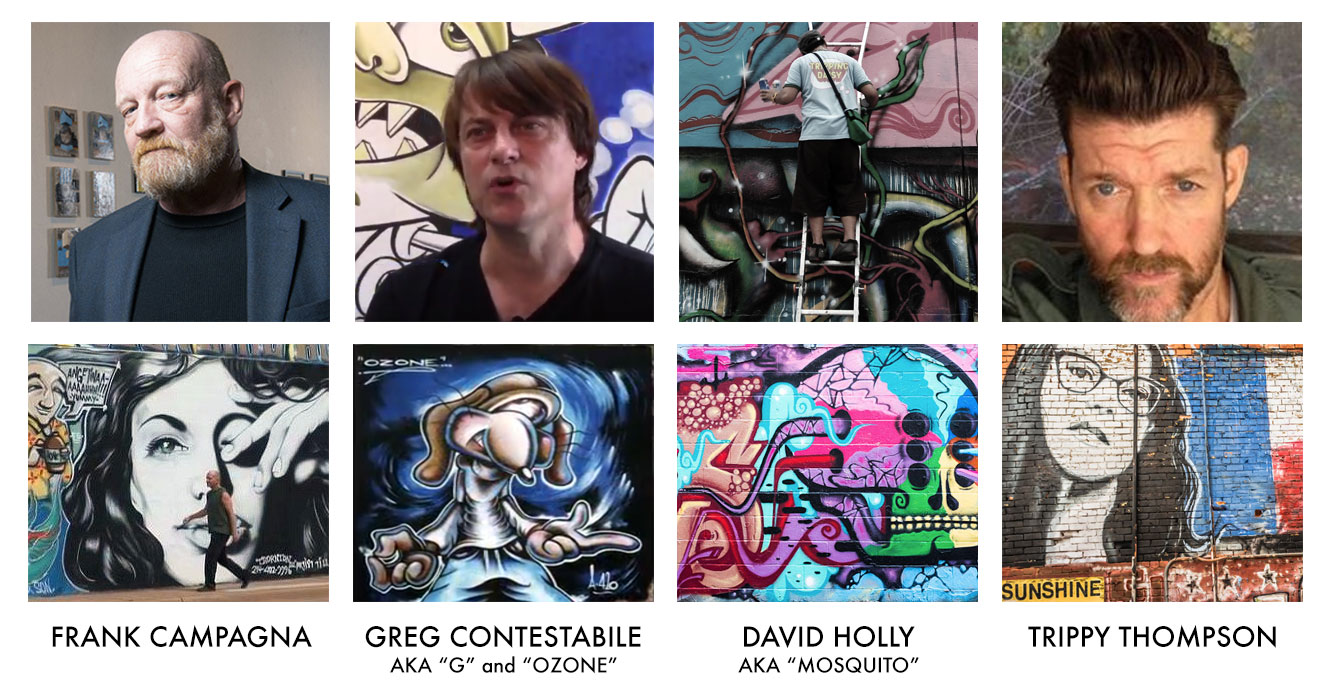
There were also prominent galleries including Nancy Whitenack's Conduit Gallery, the Barry Whistler Gallery, the Eugene Binder Gallery, and alternative exhibit space like 500X and the other smaller venues. Artists included Frank X. Tolbert, Vincent Falsetta, Frances Bagley, Tom Orr, Greg Malphurs, George Lacy, and more.

The Stout-McCourt drew a lot of attention from the very beginning - and Bret's artists enjoyed and embraced that exposure. Dallas Morning News writer Joyce Saenz Harris, who had written "Stout Offerings" for DMN High Profile about Bret and his art gallery, continued to follow Bret during his military deployment and printed updates under the title "Our Man in Saudi".
Major art collectors in Dallas began frequenting and purchasing entire collections of the local artist work.
THE COMMUNITY BACKED BRET WHEN HE GOT DEPLOYED FOR WAR
Bret Stout received his orders for deployment and had only seven days to organize his gallery staff to run it without him. He had no idea when he would be back. It would be eight months before he returned from the Middle East. Several members of the gallery staff really stepped up in Bret's absence, including Jason Hill, Tiffany Briggs, and Lisa Cummings, and led by Pamela Eubanks. They kept the gallery open - and after Bret returned from the war, the SMU Daily Campus wrote an article titled,
"Homecoming: Deep Ellum Art Dealer Returns from Persian Gulf".

After an overwhelming victory in the war, Bret returned and was interviewed by the Dallas and Fort Worth television stations. In the photos above, you can see Bret in Kuwait (left photo), being interviewed by CBS Channel 11 while his mother cried tears of joy (center photo).
CAN YOU CONNECT THE WAR TO THE ART SCENE?
The first gallery opening upon his return was titled "Reflections of War & Peace" with amazing installations by George Demmerle (the well-known New York hippie/radical of the late 60s and early 70s, and sculptor), Don E. Sweetland (the extroverted Fort Worth sculptor), and Kenn Bird (rated by Kodak at the time as one of the top 25 photographers in the world) and his amazing and rare studio photograph of Abbie Hoffman (the most famous New York hippie/radical of the 60s and 70s - who happened to be connected to George Demmerle), plus several other local artists. The invitation had a message from the gallery owner that started with:
"Thank God I'm Bullet-Proof".
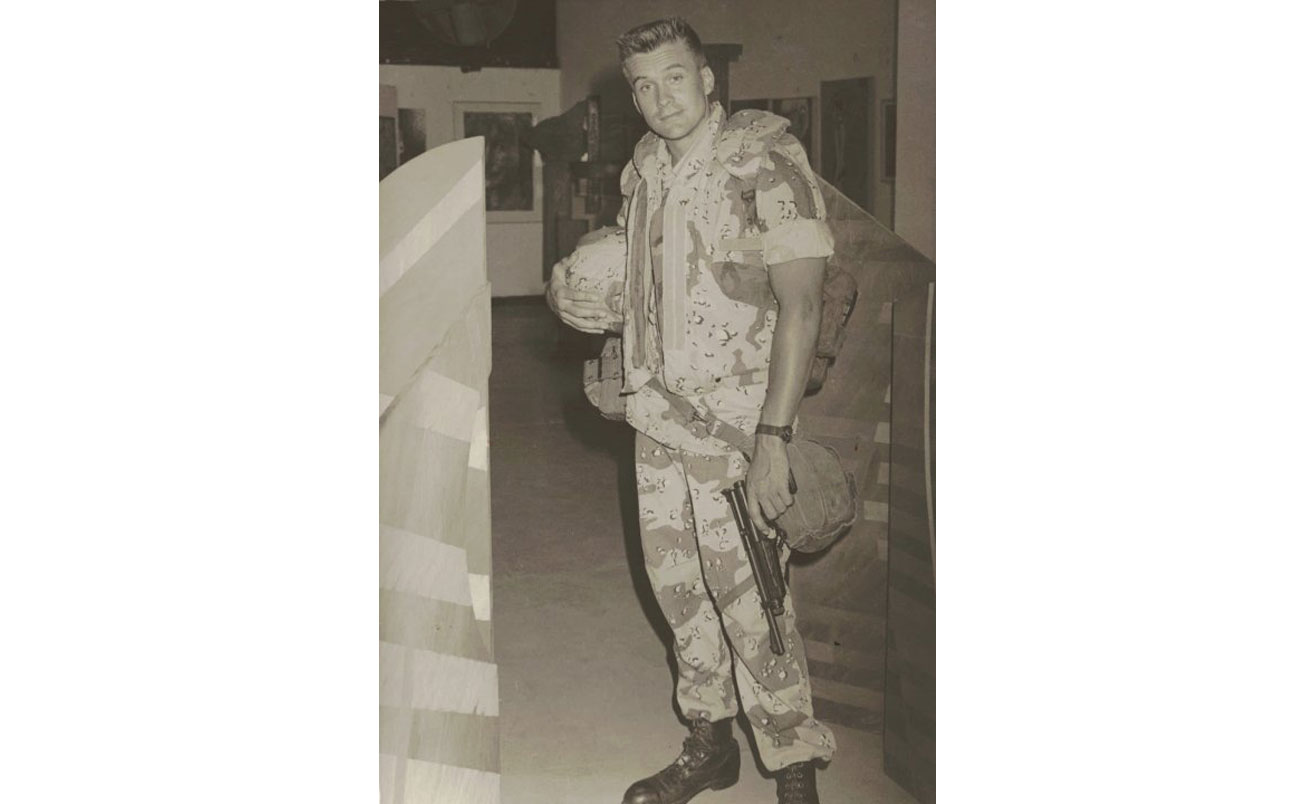
The writer of Dallas Morning News High Profile's "Stout Offerings", Joyce Saenz Harris, would later print one of Bret Stout's quotes from a letter, "If it wasn't for the continual small-arms fire and roaring jets above my head (not to mention unexpected, unexplained explosions) - I would not be able to keep my sanity. Why? Because these are the 'Sounds of Deep Ellum'!".
Bret's Stout-McCourt Gallery was featured in Dallas Morning News (the Today Section and High Profile three times), D Magazine, the Dallas Observer, the Fort Worth Star Telegram, and others. His gallery was also featured in Detour Magazine and Art News and attracted buyers from as far east as NYC and as far west as Los Angeles. His gallery also received a very positive review by Dallas Art Critic Lawson Tate from the radio station WRR 101.1. He was awarded the 1993 Multi-Ethnic Heritage Foundation Cultural Philanthropy Award, beating out two other nominees, EDS and JCPenney.

BRET IS INVITED TO THE ADULT TABLE
Bret would first be asked to become a part of the then 'elite' Dallas Art Dealers Association (DADA). This was a great honor and he enjoyed have conversations with the likes of David Dike, Beverly Gordon, Edith Baker, Nancy Whitenack, and others.
This was a highly-respected collection of gallery owners who were sincerely excited to hear fresh ideas and acknowledged the impact Bret was having on the Dallas art scene.
Membership into DADA was nearly impossible - one member has to make the recommendation - and then every single DADA member had to say yes. One 'no' and you weren't invited. It was also the very first time DADA would bypass the minimum requirement of five years in business - the Stout-McCourt Gallery had been open for less than two years. Bret would later be elected and served as the Vice President of the Dallas Art Dealers Association and it was at this time, the Dallas Art Dealers coordinated with the Fort Worth Art Dealers to have their "Gallery Nights" run over a two-day period rather than on the same night - this way art lovers could see ALL the galleries over the two-day, joint-marketed event.

Coordinating with the Fort Worth Art Dealers Association gave Bret the opportunity to visit Fort Worth and the galleries. This is when he got his first alternate experience of Fort Worth other than "Cowtown" and "Stockyards" - he experienced Fort Worth's amazing galleries - and museums. Bret's gallery artists included the funky and highly-popular mixed media sculptor Don E. Sweetland of Fort Worth. The city of Fort Worth was highly cultural and diverse - and while his perception was mostly as "Cowtown" and "Stockyards" up to that point, Bret soon discovered a very rich arts scene.
Bret would eventually discover that his perception was still limited and incomplete.
BACK TO FULL-TIME AD AGENCY WORK
A few years following the war, Bret returned to the ad agency world - back into television and print, as both a writer and art director. In addition to contract work for a few agencies, Bret worked full-time for several years at Temerlin-McClain, the largest ad agency in the southwest at the time - headed directly by Lanier Temerlin (namesake for SMU's Temerlin Advertising Institute). Bret would later evolve again when he was asked to help build the digital arm of Temerlin McClain. From television and print to website design and development was a major shift in his agency career. He even was charged with UI strategy and design for the very first airline boarding pass kiosk.

Following tm interactive, Bret worked for other interactive agencies including imc2 and aniden interactive. With imc2 he was the Creative Director of Business Development where he led the strategy and creative for all new businesses pitches to the big brands - and had a win-rate of 67% in 2007 and 74% win-rate in 2008 (industry average was 12%). For example, winning the pitch to Diet Coke, Bret beat out 18 other agencies who pitched their strategy and creative.
His unusually high win-rate for new business pitches to big brands was well-known within the interactive agency circle - especially the agencies he beat out consistently. After leaving imc2, Bret was subsequently asked to come in and mentor entire creative teams, account service teams, and business development teams on how to win - for big interactive agencies like Sapient (Miami), nFusion (Austin), Razorfish (Austin), and Geary Interactive (San Diego). Bret executed contract agency work for a number of agencies, including iccentric (Austin), Chiat-Day (Los Angeles), and Charlie Uniform Tango (Austin) for consumer brands - and did government contract work for Reingold, Inc. and JPS (both in Alexandria, VA).

For Sony, he was brought into their San Diego location to give a presentation to all of the heads of marketing for every Sony division with "The Evolution of the Online Product Experience" - and how you can move consumers from the touch-and-feel world of brick and mortar retail stores - to the online space to review and purchase products by delivering consumer-controlled 3D product experiences.
With Aniden Interactive, Bret had the opportunity to lead the strategy and creative UI design for mobile (Blackberry and Palm Pre), tablet (HP Slate), and touchscreen computers (HP TouchSmart). He served in agency leadership roles for the last full-time ad agencies and had the opportunity to manage teams of creatives, account service, programmers, 3D modelers, 3D animators, and SEO/SEM. Leading SEO teams forced him to become an expert in SEO (search engine optimization) and is able to get his clients to the very top of Google Search.

Bret has worked with the biggest brands in the world - on the consumer product side with brands like Coca-Cola, HP, and M&Ms - to government brands like the VA, Department of Defense, and U.S. Navy.
THE MOVE TO FORT WORTH
Bret Stout's Perception of Fort Worth was about to change (again).
While living in Dallas, Bret would learn about the 'Secret-World-of-Fort-Worth' with visits with his friends. Bret finally understood why they chose Fort Worth over Dallas – Fort Worth is an amazing city with so many attributes and surprises. Yes, it is true that Fort Worth is different than Dallas – but in this case different is a great thing. People are generally nicer here - and it has the small-town-feel with all the amenities of a big city. And whether it's the arts, theater, music, schools, racing, hills, lakes, rivers, shopping, military, entertainment, sports, and even the culture and history of the Stockyards, Fort Worth is a great city to raise a family and run a business.

In 2012, following agency tenure in Houston with aniden interactive and while living in Austin doing contract advertising work, Bret's wife pushed to move back to Fort Worth. Now Bret is here to stay and applying his skills and experience on small to mid-sized businesses in Fort Worth.
Yes, born in California and spent his teen years in Missouri. Time spent in farming, art gallery owner, award-winning ad agency creative, AND Combat-Decorated U.S. Marine.
Bret Stout's life has been quite diverse - and filled with many juxtapositions. But all of this has led to him to right now - and right here in Fort Worth to help YOU.
![]()
Bret Stout is ready to help YOU take your Fort Worth business to the next level.


BRET STOUT'S CAPABILITIES
It's much more than just a logo design or a website design – these are crucial steps in the business development cycle that make the difference in success or failure. Bret Stout has proven experience in the full business development cycle – from product ideation, brand strategy, launch strategy, Google Search, and conversion. Take a look at his full capabilities by clicking here: Bret Stout's Capabilities. The development cycle can be broken down in the following three core segments:
Brand Ideation
The first step is identifying a gap in the market and creating a solution to a problem. more>
Brand Strategy
Next step is developing strategy for the brand and understanding the target audience. more>
Brand Launch
Next major step is to launch your product to reach your specific target audience an demographics. more>
BRET STOUT'S CLIENTS
Of course, Bret Stout's clients included many of the biggest brands in the world – but now he focuses that experience on small to mid-sized businesses in Fort Worth.
And while his primary focus is on Fort Worth businesses (like yours), he still get's requests for work in other cities across the U.S. Below is a preview of Bret Stout's clients – and there are more than 100 client samples available in "The Work" section.

-
Testimonials

-
"Bret’s leadership and execution exceeded our expectations on work for some of the world’s most recognizable brands. We collaborated on a wide variety of projects – and through patience and extreme attention to detail, his work is refined and consistent.""
Brandon J. White, Aniden Interactive
-
"Artistry lies in the creativity, passion and focused desire and ability to bring those into a medium that can be communicated and appreciated by the masses. That, my friend is Bret Stout. You give me and your clients wings. Without you, we cannot fly."
Curtis Anderson, Director of Communications and Marketing, VA
-
"We are so pleased with the level of creativity and skill Bret Stout brings to our marketing campaigns and product launches. Bret continues to create highly creative and innovative experiences, allowing HP to appeal to consumers and businesses in unforgettable ways."
Jeff Wood, Director of Worldwide Marketing, HP
-
"Bret Stout is one of the brightest and most talented people I have ever worked with. I had to and could always rely on Bret for marketing solutions servicing my customers and fantastic artistic work. He is truly one of the nicest and most talented person I have relied on and worked with during my career."
Gene Schaeffer, Principal at Brand Solutions
-
"I immensly enjoyed working with Bret and appreciated his dedication, attention to detail, and most of all, the quality of his work! He is able to produce results in a chaotic environment and always remains calm and focused – and ALWAYS delivered-the-goods"
Mike Graziano, SVP TAISTech
-
"We hired Bret to redesign our corporate logo and website at CorporateRewards.com. He came recommended to us from the first phone call it was clear he was a creative that also truly gets the business side. He was always available and delivered on time."
Edward Brookshire, Chairman Emeritus, Workstride
-
"From my experience, there is not a better web marketing mind out there. There is no comparison. Bret is the leader and creative mind that's needed to take your business to that next level."
Todd Hollingsworth, Harley-Davidson, Caliber
Contact Bret Stout
Now that you are ready to take your Fort Worth business to the next level, it's time to contact Bret Stout.
Contact Information
